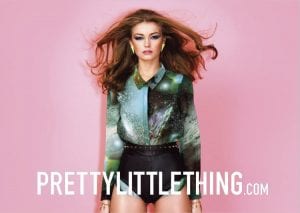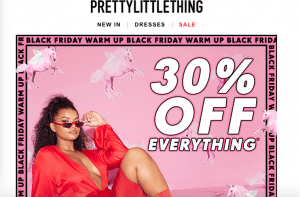A branded app by definition is ‘software that is downloadable to a mobile device and prominently displays a brand identity throughout the user experience’, (Bellman et al, 2011).
By creating a branded app, firms can take advantage of “anytime, anywhere” engagement, which can ‘promote consumer engagement and loyalty’, (Kim, Wang & Malthouse, 2015).
However, if the app isn’t received well by customers, then it could have detremental effects to the brands image.
This blog is a summary of the tips and risks involved when creating a branded app to increase customer engagement…
- Make sure the CUSTOMER REMAINS CENTRAL TO EVERY DECISION
No matter how much time you put into developing the perfect app, if your customer doesn’t enjoy/engage with it then they are likely to abandon it.
- Firstly it’s important to understand what your target market wants from your app through market research!
For example…According to a study by Bellman, et al., ‘apps with a user-centered style’ are more effective since this focuses attention on the user, and encourages personal connections with the brand, (2011).
And Dillard et al., suggest encouraging engagement by ‘providing a chat box for customer service’, creating an open line of communication, (2012).
- If the app succeeds in fulfilling the customer’s needs, then it will encourage ‘flow’, (Csikszentmihalyi, 1975). Flow occurs when a customer is so heavily engaged with a platform they lose track of time/awareness of any other external factors.
… The more the customer enjoys the app, the more likely they are to return due to their commitment towards the brand, resulting in ‘increased purchase and loyalty’ (Evanschitzky et. al., 2012).
Tip: Simplicity is key!.. A study by Levenson, (2016) emphasises the importance of ‘the principle of least effort’ .. in other words, it highlights how customers prefer a simple journey through an app, including sign up, log in, and purchasing pages.
In the figure below, Fang highlights the affordances of a branded app, showing the inputs that increase overall customer loyalty, and the resulting effects, (2018).
- Utilizing PUSH NOTIFICATIONS
Push notifications are a fundamental channel for communicating with the customer. According to a study by Urban Airship, ‘sending even more (high value) push notifications can increase app retention rates by 3 to 10 times’, (2017).
- Furthermore, the same study suggests that personalised notifications, for example using a customers name or favourite product, are much more likely to improve customer retention in the long term, since a personal relationship has been established.
The theory of effective frequency suggests users will be more likely to return to the app/think of the brand when browsing since they have been exposed to it more often. As confirmed by Schmidt, et al., ‘massed exposures in advertising enhance the repetition effects on recall’, improving customer retention, (2015).
- Push notifications also present the opportunity for in-depth, complex analytics, identifying click-through rates, interaction times and user behaviour..all key for making improvements.
Tip: Different types of push notifications should be previously A/B tested to suit your target market..
(Source: Moovweb)
3. Create a strong MOBILE VALUE PROPOSITION
A value proposition is what differentiates your app from competitors and is likely to be the main/unique reason your customers will stay engaged.
- Make sure your aims are focused and your whole team is aligned with them.
Meritt introduces the idea of simply using the phrase, ‘My brand’s mobile app helps users [detail the unique value, utility and relevance it offers]’ and filling in the blanks, (2019).
If you’re having trouble defining your value proposition, watch this short video..
With every new venture, there comes some RISKS..
1. The risk of APP ABANDONMENT
- An article by Chen et al., identifies the main reason for app abandonment as being the abuse of push notifications. The study explains how users felt ‘affected by information overload and intrusiveness’ from some push notifications, (2019).
(To avoid this: Make sure you do your market research and communicate to the customer throughout the app development, both before and after launching. A/B testing is also key.)
- In addition, a survey in 2016 suggests another ‘major reason for app abandonment is that customers do not tolerate even a single bug in an app’, (Wang, et al.).
TO NOTE…when evaluating other secondary sources it must be acknowledged that the type of consumer group will impact behaviour. Therefore, the results may not directly correlate to your target market, and further research into the exact market may have to be conducted.
(However, first impressions are still key, and so pilot testing your app prior to the launch is the perfect way to catch any glitches.)
2. Impact of APP DISENGAGEMENT
- In a study by NorthWestern University, ‘research shows, if consumers disengage from your app, that means they may disengage from your brand and purchase less than they did before downloading the app’, (2019).
(To avoid this: Again, always utilise all your market research so that you are creating suitable content to meet customer needs & DO NOT rush the development stages as there’s no point taking risks!)
..So don’t waste the opportunity to get your “brand in the hand” and engage your customers, (Sultan and Rohm, 2005).
References:
- Bellman, S., Potter, R.F., Treleaven-Hassard, S., Robinson, J.A. and Varan, D., (2011). The effectiveness of branded mobile phone apps.Journal of interactive Marketing, 25(4), pp.191-200.https://doi.org/10.1016/j.intmar.2011.06.001
- Chen, J., Tran, A. and Nguyen, T. (2019). Understanding the discontinuance behavior of mobile shoppers as a consequence of technostress: An application of the stress-coping theory. Computers in Human Behavior, 95, pp.83-93. https://doi.org/10.1016/j.chb.2019.01.022.
- Csikszentmihalyi, M. and Csikszentmihalyi, I., 1975.Beyond boredom and anxiety (Vol. 721). San Francisco: Jossey-Bass.
- Evanschitzky, H., Ramaseshan, B., Woisetschläger, D., Richelsen, V., Blut, M. and Backhaus, C. (2011). Consequences of customer loyalty to the loyalty program and to the company.Journal of the Academy of Marketing Science, 40(5), pp.625-638.https://doi.org/10.1007/s11747-011-0272-3
- Eyal, N., 2014.Hooked: How to build habit-forming products. Penguin UK. pp.4.
- Fang, Y. 2018, “An app a day keeps a customer connected: Explicating loyalty to brands and branded applications through the lens of affordance and service-dominant logic”, Information and Management. https://doi.org/10.1016/j.im.2018.07.011 .
- Levenson, H. (2016).Why are Mobile App Users Abandoning your App?. [online] Webanalyticsworld.net. Available at: https://www.webanalyticsworld.net/2016/08/why-users-are-abandoning-your-mobile-app.html(Accessed 13 Feb. 2019).
- Levenson, H. (2018).The Principle of Least Effort: An Integral Part of UX | Appsee Blog. [online] Appsee Blog. Available at: https://blog.appsee.com/the-principle-of-least-effort-an-integral-part-of-ux/(Accessed 13 Feb. 2019).
- MBA Skool-Study.Learn.Share. (n.d.).Effective Frequency Definition | Marketing Dictionary | MBA Skool-Study.Learn.Share.. [online] Available at: https://www.mbaskool.com/business-concepts/marketing-and-strategy-terms/13155-effective-frequency.html(Accessed 12 Feb. 2019).
- Meritt, A. (2019). 4 simple strategies of becoming an even better mobile marketer. [Online] Available at: https://www.urbanairship.com/blog/four-simple-steps-to-becoming-a-better-mobile-marketer(Accessed 11 February 2019).
- Salvesen, A. (2015).https://people.com/. [online] PEOPLE.com. Available at: https://people.com/chica/lin-manuel-miranda-vanessa-nadal-love-story/(Accessed 14 Feb. 2019).
- Schmidt, S. & Eisend, M. (2015), “Advertising Repetition: A Meta-Analysis on Effective Frequency in Advertising”, Journal of Advertising, vol. 44, no. 4, pp. 415-428.
- Sultan, F. and Rohm, A., 2005. The coming era of” brand in the hand” marketing: The growing popularity of cell phones and other hand-held mobile devices has opened up new marketing possibilities. MIT Sloan Management Review, 47(1), pp.83-91.
- medill.northwestern.edu. (2019). What’s to Lose? The Dangers of One Bad App – The Medill IMC Spiegel Research Center. [online] Available at: https://spiegel.medill.northwestern.edu/branded-app-roi/dangers-of-bad-app.html(Accessed 14 Feb. 2019).
- Sundar, S.S., Oh, J., Kang, H. and Sreenivasan, A., (2012). How does technology persuade?: theoretical mechanisms for persuasive technologies. InThe Sage handbook of persuasion: Developments in theory and practice(pp. 388-404). SAGE Publications Inc.
- Urban Airship. (2017).New Urban Airship Study Reveals App Publishers that Don’t Message Users Waste 95 Percent of their Acquisition Spend. [online] Available at:https://www.urbanairship.com/company/press-releases/new-urban-airship-mobile-app-retention-study(Accessed 12 Feb. 2019).
- Wang, B., Kim, S. and Malthouse, E.C., (2016). Branded apps and mobile platforms as new tools for advertising.The new advertising: Branding, content, and consumer relationships in the data-driven social media era, 2, pp.1-39.













Recent Comments